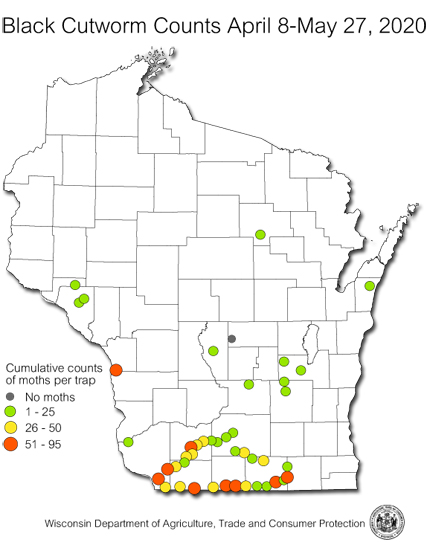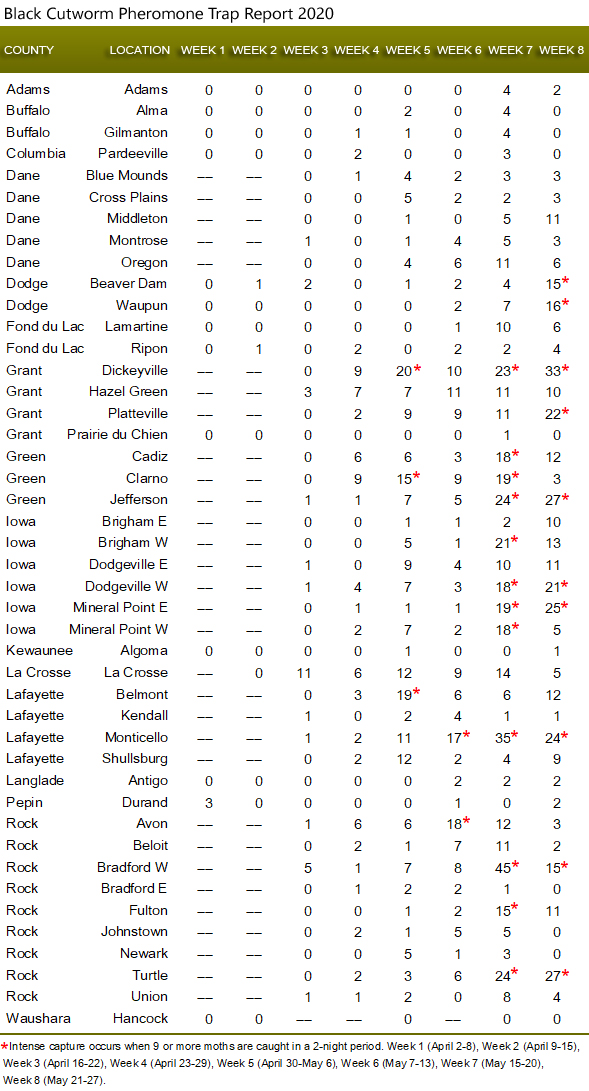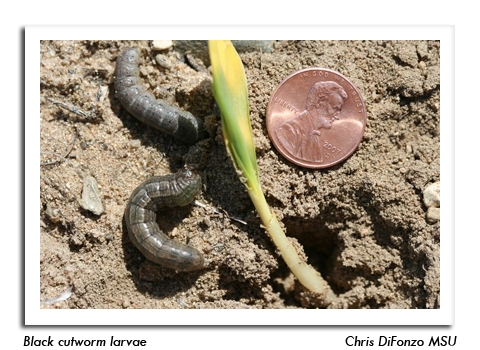
 |
|
|
Corn
Volume 65 Number 5 Date 05/28/2020 BLACK CUTWORM - Survey traps have collected a cumulative total of 1,301 moths at 44 monitoring sites as of May 27. Most of the moths (60%) were captured in the last two weeks. The late arrival of migrants this spring combined with an early corn planting window suggest the risk of widespread black cutworm outbreaks is lower than in recent years, but recent significant flights could still produce damaging localized infestations in June. Larvae resulting from the spring migration are now in the damaging late-instar stages in advanced portions of southern and west-central Wisconsin. Signs of cutworm activity, such as small, irregular holes in the leaves and the presence of cut plants should be detectable in the week ahead. All corn should be closely monitored for cutworm feeding or below-ground tunneling injury as soon as corn emerges and until the five-leaf stage. A threshold of 3% cutting of plants (with black cutworms still present in the field) has traditionally been used as the point at which growers should consider a rescue treatment. Early and timely detection of cutworm infestations is critical for controls to be effective. TRUE ARMYWORM - Moderate flights of 39-64 moths have been registered at the Columbia, Manitowoc, Fond du Lac and Rock County trap locations in the past week, indicating a potential for larval infestations in small grains and corn next month. Reduced tillage corn following sod or a small grains cover crop, and fields with early-season grassy weed pressure, are candidates for armyworm problems. Damage usually appears first in the perimeter rows of fields, where the larvae enter when moving from another food source. EUROPEAN CORN BORER - The degree day model for this insect suggests the first flight could begin shortly in advanced areas of the state where 374 heat units (modified base 50°F) have accumulated, including Beloit and Madison. Moths are not yet appearing in black light trap collections, but the spring flight is expected to start during the first week of June. SLUGS - Minor leaf feeding has been reported in damp, weedy cornfields in the southeastern counties. Slugs may become an issue if fields remain wet, particularly in no-till or reduced-till systems with heavy residue and little soil disturbance. -- Krista Hamilton, DATCP Entomologist 





|
|
|